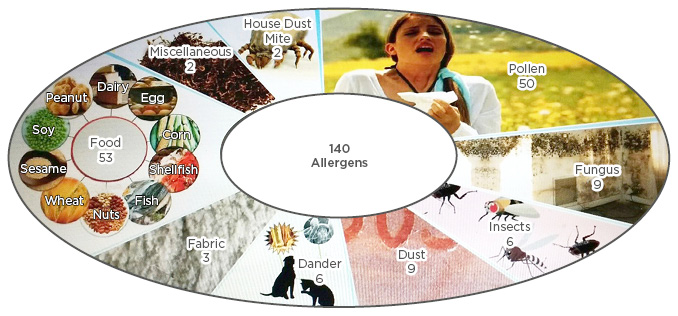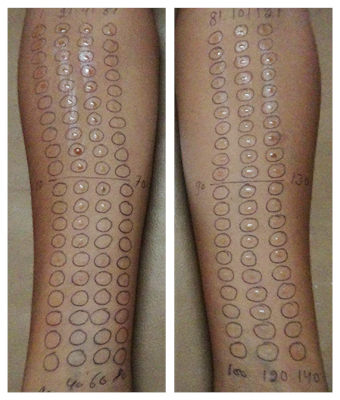When allergen detection is not possible by a patient themselves or from their previous history, the next step is allergy testing. When allergen avoidance is not practical, immunotherapy becomes important. A person can be allergic to anything in the world, from the sun above to the earth below.
India is a large country with a population of approximately 1.2 billion, low socioeconomic status, a low literacy rate, and large numbers of fauna and flora and, hence, a large number of indoor and outdoor allergens.
Case history alone often leads to misdiagnosis of rhinitis. Nearly 65% of patients are prescribed antihistamines for their reported allergic rhinitis; however, they have symptoms that are not caused by this condition.1-3 In such a situation, it becomes very difficult and impractical to test allergens from the patients by history alone or with a fixed panel of allergens pertaining to the local area. This is for several reasons: allergic patients are travelling across countries, new sensitisations are being discovered in relation to climate change, and cross-reactivity may be unsuspected.
An allergy test was carried out by a modified skin prick test (MSPT) method for 140 common allergens of central India (Figure 1).4 A total of 810 patients from 6–63 years of age participated. The MSPT was carried out on the volar aspect of both forearms, spaced at a distance of 1.2–1.5 cm between two allergens to accommodate 140 allergens.5 This compared to a paper by Welsh et al.3 Of the 810 patients, only 10 showed overlapping of induration for 2–3 allergens, which were tested just above the cubital fossa in the same sitting (Figure 2).

Figure 1: Common allergens of central India.

Figure 2: Modified skin prick test with 140 allergens. Demonstration of allergen placement.
Discussions were held with patients regarding their MSPT results, causative allergens, and exposure details. Surprisingly, a correlation between MSPT results and history could be established retrospectively, which may have been missed due to a more limited number of allergens and history of correlation of symptoms before allergy testing. In the discussed MSTP method with 140 allergens, an accurate diagnosis of severe persistent allergic rhinitis could be made saving time, energy, and money compared to current testing.
When this abstract was presented at the EAACI congress, several questions were asked by attendees:
Q: Is the MSPT economically viable?
A: It is believed that, yes, this method of allergen detection is economically viable.
Q: How easy was it to use the template to mark out 140 allergens?
A: This is a matter of practice only.
Q: Was serum-specific IgE collected before immunotherapy with MSPT began?
A: Serum-specific IgE was not collected because IgE and skin prick test do not have the same biological and clinical relevance and are not interchangeable.3







